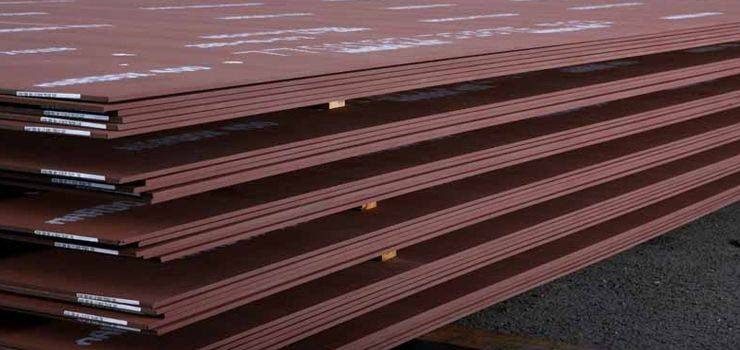2-Ethylhexyl acrylate (2-EHA) is a significant compound in the realm of polymer chemistry, widely used in the production of adhesives, coatings, and various polymers. Its versatile properties, including good adhesion, flexibility, and weatherability, make it indispensable in several industrial applications. However, understanding the production cost of 2-Ethylhexyl Acrylate is vital for manufacturers, as it directly influences pricing strategies, market competitiveness, and overall profitability.
In this comprehensive analysis, we delve into the intricacies of 2-EHA production costs, exploring the key factors that drive expenses, the challenges faced by producers, and the potential opportunities for cost optimization.
Understanding 2-Ethylhexyl Acrylate Production
Before delving into the cost analysis, it’s essential to understand the production process of 2-EHA. Generally, 2-EHA is synthesized through the esterification of acrylic acid with 2-ethylhexanol in the presence of a catalyst, typically sulfuric acid or acidic ion-exchange resins. The reaction proceeds under controlled conditions of temperature, pressure, and reaction time to ensure optimal yield and purity of the final product.
Request For Free Sample: https://www.procurementresource.com/production-cost-report-store/2-ethylhexyl-acrylate/request-sample
Factors Influencing Production Cost
Several factors contribute to the production cost of 2-EHA, ranging from raw material prices to process efficiency and regulatory compliance. Here are some of the key factors:
- Raw Material Costs: The prices of acrylic acid and 2-ethylhexanol, the primary raw materials for 2-EHA production, significantly impact production costs. Fluctuations in crude oil prices, supply-demand dynamics, and geopolitical factors can all influence raw material prices.
- Energy Consumption: The 2-EHA production process requires significant energy input for heating, cooling, and maintaining reaction conditions. Energy prices, efficiency of equipment, and process optimization strategies affect energy consumption and, consequently, production costs.
- Catalysts and Additives: Catalysts and additives play a crucial role in the esterification reaction, influencing reaction kinetics, yield, and product quality. The cost of catalysts, as well as any auxiliary additives, contributes to the overall production cost.
- Process Efficiency: Process efficiency, including reaction yield, conversion rates, and by-product formation, directly impacts production costs. Improving reaction kinetics, reducing side reactions, and optimizing process parameters can enhance efficiency and reduce production costs.
- Compliance and Regulations: Compliance with environmental regulations and safety standards adds additional costs to production. Investments in pollution control measures, waste treatment, and safety protocols are necessary to ensure regulatory compliance but can increase production expenses.
Challenges in 2-EHA Production Cost Management
Despite the demand for 2-EHA and its widespread applications, producers face several challenges in managing production costs effectively:
- Raw Material Price Volatility: Fluctuations in the prices of acrylic acid and 2-ethylhexanol, driven by factors such as crude oil prices, supply chain disruptions, and geopolitical tensions, pose challenges for producers in forecasting and managing production costs.
- Energy Price Uncertainty: Energy prices, including electricity and natural gas, are subject to volatility due to market dynamics and geopolitical factors. Uncertainty in energy prices makes it challenging for producers to budget and plan production costs effectively.
- Technological Limitations: While significant advancements have been made in 2-EHA production technology, there are still limitations in process efficiency and yield optimization. Overcoming these technological challenges requires substantial investments in research and development, which can impact production costs.
- Regulatory Compliance Costs: Compliance with environmental regulations and safety standards adds a layer of complexity and cost to 2-EHA production. Producers must invest in pollution control measures, waste management systems, and employee training to ensure compliance, adding to production expenses.
Opportunities for Cost Optimization
Despite the challenges, there are opportunities for producers to optimize production costs and improve profitability:
- Strategic Raw Material Sourcing: Producers can mitigate the impact of raw material price volatility by strategically sourcing acrylic acid and 2-ethylhexanol. Long-term supply agreements, diversification of suppliers, and hedging strategies can help stabilize raw material costs and reduce price risks.
- Energy Efficiency Improvements: Investing in energy-efficient equipment, process optimization, and waste heat recovery systems can reduce energy consumption and lower production costs. Implementing energy management systems and conducting energy audits can identify areas for improvement and cost savings.
- Process Optimization: Continuous improvement initiatives, such as lean manufacturing and Six Sigma methodologies, can optimize 2-EHA production processes, improve yield, and reduce waste. By optimizing reaction conditions, minimizing side reactions, and enhancing process control, producers can lower production costs while maintaining product quality.
- Collaboration and Innovation: Collaboration with research institutions, technology providers, and industry partners can drive innovation in 2-EHA production technology. Investing in research and development initiatives focused on catalyst development, process intensification, and alternative feedstocks can lead to cost-effective production methods and competitive advantages.
Conclusion
The production cost of 2-Ethylhexyl acrylate is influenced by various factors, including raw material prices, energy consumption, process efficiency, and regulatory compliance. While producers face challenges such as raw material price volatility, energy price uncertainty, and regulatory compliance costs, there are opportunities for cost optimization through strategic raw material sourcing, energy efficiency improvements, process optimization, and innovation. By addressing these challenges and leveraging opportunities for optimization, producers can enhance competitiveness, improve profitability, and sustainably meet the growing demand for 2-EHA in various industrial applications.

